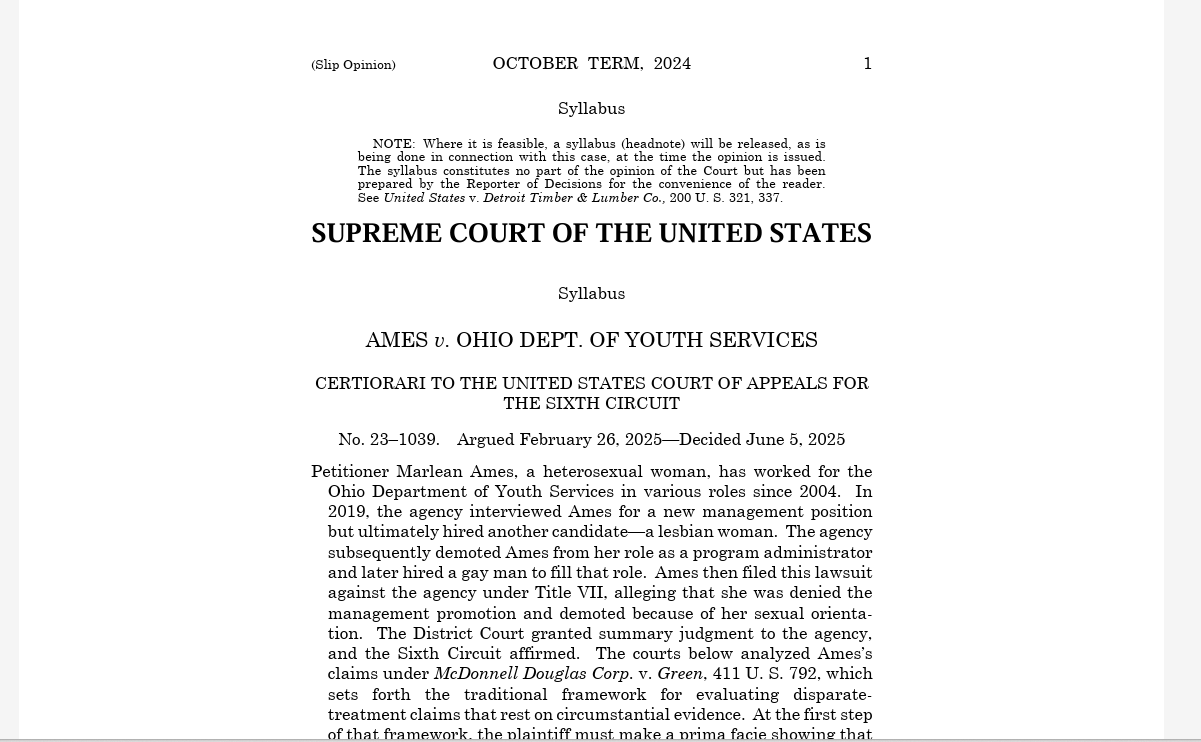
The US Supreme Court unanimously ruled Thursday against imposing a higher burden of proof for reverse discrimination Title VII lawsuits.
The Court reversed on a case involving a heterosexual woman who claimed that she was denied promotion and demoted because of her sexual orientation. A lower court had applied a “background circumstances” rule to the case, which established a higher evidentiary burden for Title VII claimants who suffered as a member of a majority class. However, the Supreme Court held that this higher burden contradicted the text of Title VII and court precedent.
In order to bring a Title VII claim, plaintiffs must provide evidence of discriminatory motive on the part of their employer. Under the traditional standard, a plaintiff can show that she “applied for an available position for which she was qualified, but was rejected under circumstances which give rise to an inference of unlawful discrimination.” However, under the challenged standard, a plaintiff must additionally show “background circumstances to support the suspicion that the defendant is that unusual employer who discriminates against the majority.”
Justice Ketanji Brown Jackson penned the opinion and noted that case law has established rigid requirements for prima facie discrimination claims. Jackson wrote that the “background circumstances requirement disregards this admonition by uniformly subjecting all majority-group plaintiffs to the same, highly specific evidentiary standard in every case.”
The court remanded the case for the application of an equal prima facie standard for all individual plaintiffs.
Justice Clarence Thomas wrote a concurring opinion providing additional criticisms of the lower court’s background test. Thomas argued that the test provides no guidance as to which contexts inform whether an individual is part of a minority or majority group:
Women, for example, make up the majority in the United States as a whole, but not in some States and counties. Similarly, women make up the majority of employees in certain industries, such as teaching and nursing, but the minority in other industries, such as construction.
Drawing from language of a previous court decision, Thomas added that in a racial context, majority and minority groups are difficult to define because “racial categories tend to be ‘overbroad’ and ‘imprecise in many ways.’”
Title VII prohibits employers from intentionally discriminating against their employees because of their race, color, religion, sex, or national origin.



